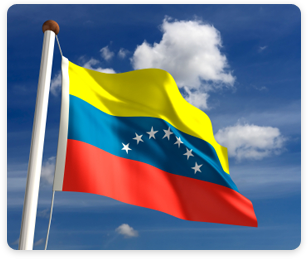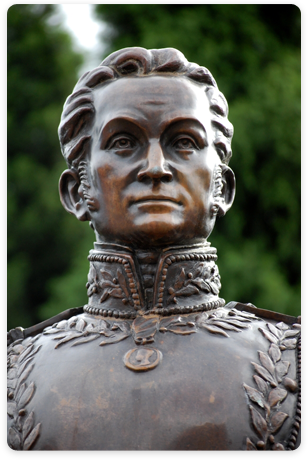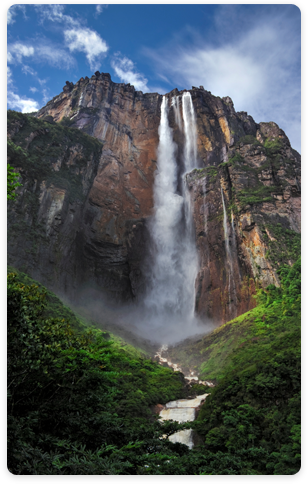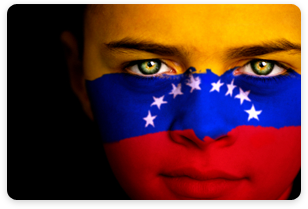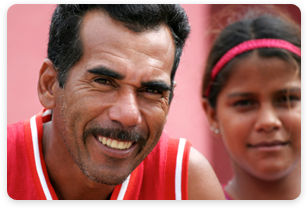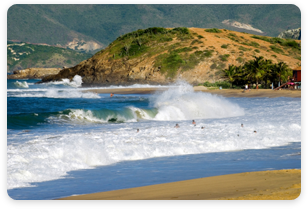History of Venezuela
This brief historical overview of Venezuela has been created to help you get a better understanding of the country of Venezuela, and the events that have shaped the country and its people.
Venezuela, home to approximately 29 million people, is officially called the Bolivarian Republic of Venezuela. Venezuela is a country on South America’s northern coast, and shares a border with Columbia, Guyana, and Brazil.
Venezuela has a rich history that dates back tens of thousands of years! Let’s go back in time and see what Venezuela was about starting in 7,000 BC…
Venezuela 7,000 BC – 1,000 AC
Archeologists have identified the time from 7,000 BC to 1,000 AC as the Meso-Indian period. It was during this period that hunters and gatherers first established tribal structures. Groups also migrated towards the coast, built boats and enjoyed the rich bounty of the Caribbean seas off the coast of Venezuela.
Venezuela 1,000 AC – 15th Century
From 1,000 AC to the 15th Century was known as the Neo-Indian period, and marked the start of the agricultural period in Venezuela. It was during this period that many people settled into family tribal groups based on one of the three main languages at the time: Arawak, Carib, and Chibcha.
Venezuela 1500 – The Spanish Period
The end of the 15th century marks the start of a big transition period in Venezuela. By the 1500s, Venezuela consisted of tribes or groups of agrculturists and hunters along Venezuela’s north east coast, the Andean mountain range, and near the Orinoco River.
There were also groups of hunter-gatherers and fisherman in Venezuela around Lake Maracaibo that spoke Arawakan and raised cattle, goats, and pigs. South east of the Lake Maracaibo were the Onoto, Motilón and Pemón tribes (you can still find the Motilón tribe living in the Andes.)
Christopher Columbus Sails to Venezuela
In 1498, Christopher Columbus became the first European to travel to Venezuela on his third voyage (the only one of his four voyages to reach South America.) It was during this voyage that the “Pearl Islands” of Cubagua and Margarita were discovered.
More explorers returned to the islands off Venezuela, enslaved the indigenous people and harvested the pearls intensly because they were considered one of the most valuable resources of the Spanish Empire. But by 1531, the Spanish Empire’s insatiable demand for pearls and uncontrolled harvesting devastated the pearl oyster population.
Spain’s colonization of Venezuela’s mainland began in 1521-1522 with the present day city of Cumaná, located in Venezuela’s Sucre State, 249 miles (402 kilometers) east of Caracas (the capital of Venezuela.). Cumaná is located at the mouth of the Manzanares River in north east venezuela, and is home to the Universidad de Oriente, and Mochima National Park, one of Venezuela’s most beautiful beaches.
Venezuela’s War of Independence
By the end of the 18th century, people in Venezuela began to push back against Spain’s colonial control of the country and their restrictive trade policies. Then, in 1808, France invaded Spain, which led to the collapse of the Spanish Monarchy. The process of creating a new, stable government in Spain took two years, which created a power vacuum in Spanish terroritories, including Venezuela.
On April 19, 1810, the municipal council of Caracas headed a movement that successfully deposed the Spanish Governor and Captain General, Vicente Emparán. A Junta (group) to take his place was established, and called the Caracas Junta. Other provinces around Venezuela followed Caracas’s example and created their own Junta to govern their provinces.
The Caracas Junta worked with the leaders of the other provinces and established a central government for the entire region. At the beginning, venezuela’s new Congress (and the Junta) still recognized themselves as part of the Spanish Monarchy with separate governments due to the French invasion of Spain.
During discussions, some members of the Venezuelan Congress pushed for total independence. Among them was a young Venezuelan named Simón Bolívar. In 1813, Bolívar joined the United Provinces of New Granada army. After winning several battles, Bolívar was chosen to lead a group of soldiers into Venezuela to liberate it from Spanish rule. This came to be known as the Admirable Campaign.
Simón Bolívar’s army quickly defeated the royalist troops loyal to Spain, and entered Caracas on August 6, 1813, declaring Venezuela an independent country from Spanish rule.
In 1823, after years of fighting between groups within Venezuela, Spain sent a fleet of ships to Venezuela in hopes of reconquering the country, but the Spanish were defeated at the Battle of Lake Maracaibo.
After their fight for independence was complete, Venezuela’s army continued to fight under Simón Bolívar’s command as part of the army of Gran Colombia that helped liberate New Granada, Ecuador, Peru, and Bolivia.
There’s Oil in Venezuela – The 1900s
As of 2010, Venezuela was ranked fifth largest oil exporting country in the world, and with the biggest reserves of heavy crude oil (estimated at 99.4 billion barrels) in the world. But let’s step back in time to the early 1900s…
Before Venezuela’s vast oil reserves were discovered, the indigenous peoples of Venezuela collected crude oils and asphalts from petroleum seeps that oozed up to the surface. They called this substance “mene and used it for medicinal purposes, and to seal their canoes among other uses.
In 1908, Juan Vicente Gómez was elected president of Venezuela. In the years that followed, president Gómez granted permits to explore, produce and refine oil. On April 15, 1914 the first major Venezuelan oil field was discovered. The oil field was called, Mene Grande, and sparked a wave of foreign oil companies to enter Venezuela in search of oil.
By 1929, Venezuela was the second largest oil producing country in the world, and the largest oild exporter in the world.
Venezuela 1980s – Present
After the oil crisis of 1973, Venezuela enjoyed a brief period of economic prosperity. But by the 1980s, that prosperity had disappeared. Venezuela suffered through a long economic crises in the 1980s and 1990s that led to political instability that sparked riots that left hundreds dead in Caracazo in 1989.
In 1998, Hugo Chavez was elected and launched the Bolivarian Revolution. A Constituent Assembly was created to write the 26th (and current) Constitution of Venezuela. Venezuela’s newest Constitution replaced the last one written in 1961.
Today, Venezuela is the 5th largest oil exporting country in the world, with the second largest heavy crude oil reserves of any country (only Canada has more.)





